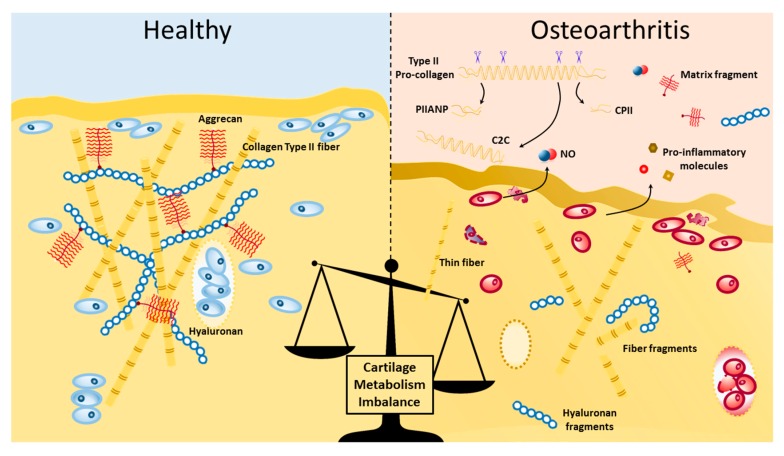Figure 1.
Visual representation of some of the elements of cartilage structure and matrix turnover changes in healthy and osteoarthritic cartilage. Type II collagen fibrils forms an intrinsic network in conjunction with aggrecan aggregates with a hyaluronic acid backbone. In normal physiological conditions, cartilage tissue integrity is maintained by an active turnover of the extracellular matrix, mediated on-site by matrix metalloproteinases (MMPs). In osteoarthritis (OA), there is increased proteolytic damage to matrix molecules in cartilage and remote sites, which can activate receptor signaling pathways, coupled with downregulation of synthesis of collagen and proteoglycan molecules. During OA, chondrocytes also produce and release pro-inflammatory molecules, such as iNOS, interleukin (IL)1, -6, -17, tumor necrosis factor β (TNFβ), interferon (IFN)-alpha, among others.

